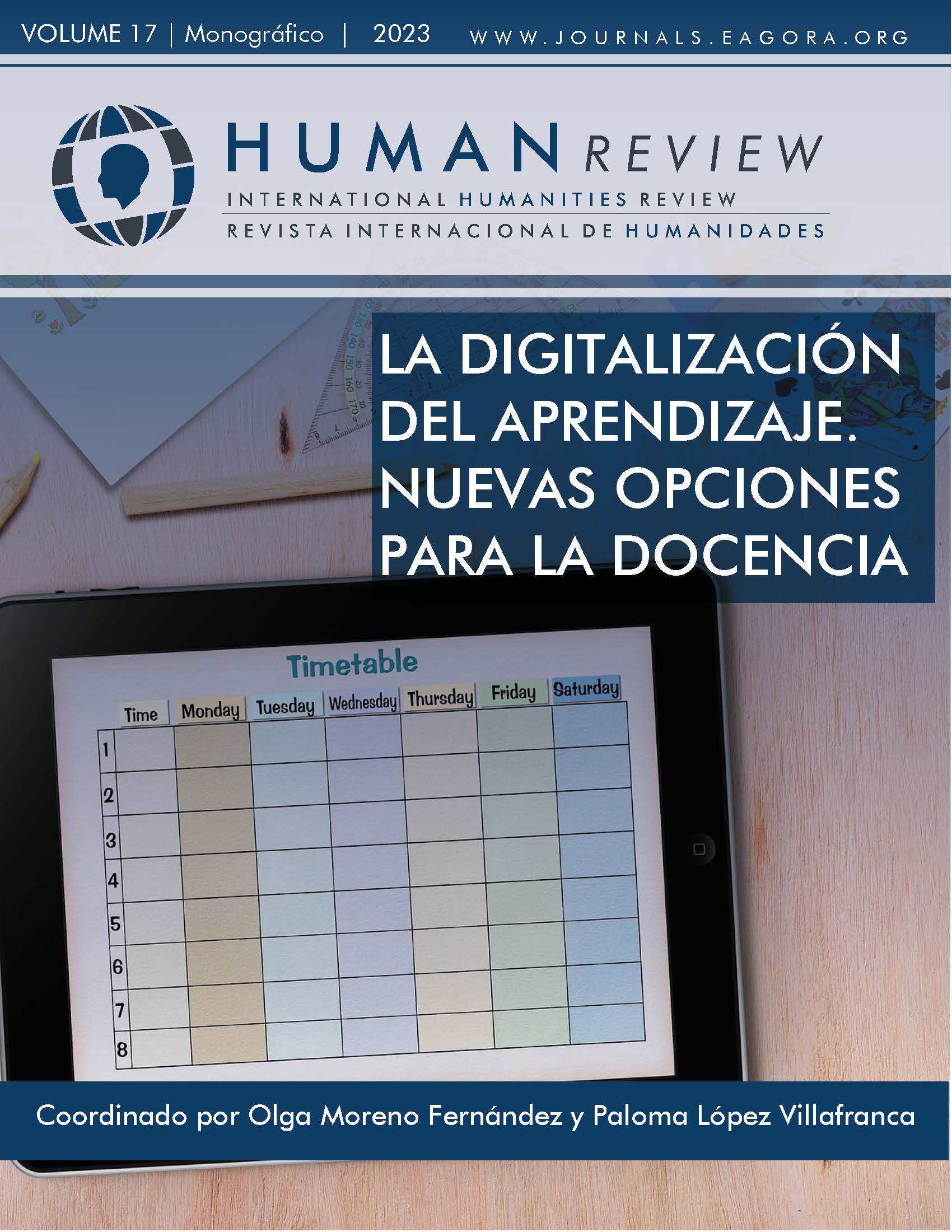Analysing two techniques for the digitisation of historical collections of anatomical models
Photogrammetry from burst photography and videogrammetry
Keywords:
3D scanning, Photogrammetry, Videogrametry, Anatomical models, Scientific collections, Cultural heritage, 3D virtualisationAbstract
In this paper, we present an experience of digitisation of anatomical models belonging to historical collections by means of burst-based photogrammetry and also videogrammetry, in order to speed up the data acquisition process.
The results showed a clear decrease in the time required for image capture with both methods with no significant loss of quality using burst-based photogrammetry and a more evident loss in the case of videogrammetry.
The main conclusion of this study is that these methods can be useful for the digitisation of anatomical collections.
References
Ballestriero, R. (2010). Anatomical models and wax Venuses: Art masterpieces or scientific craft works? Journal of Anatomy, 216(2), 223-234. https://doi.org/10.1111/j.1469-7580.2009.01169.x
Barbero-García, I., Lerma, J. L., Marqués-Mateu, Á. y Miranda, P. (2017). Low-Cost Smartphone-Based Photogrammetry for the Analysis of Cranial Deformation in Infants. World Neurosurgery, 102, 545-554. https://doi.org/10.1016/j.wneu.2017.03.015
Collins, T., Woolley, S. I., Gehlken, E. y Ch’ng, E. (2019). Automated low-cost photogrammetric acquisition of 3D models from small form-factor artefacts. Electronics, 8(12). https://doi.org/10.3390/electronics8121441
Evin, A., Souter, T., Hulme-Beaman, A., Ameen, C., Allen, R., Viacava, P., Larson, G., Cucchi, T. y Dobney, K. (2016). The use of close-range photogrammetry in zooarchaeology: Creating accurate 3D models of wolf crania to study dog domestication. Journal of Archaeological Science: Reports, 9, 87-93. https://doi.org/10.1016/j.jasrep.2016.06.028
Farella, E. M., Morelli, L., Grilli, E., Rigon, S. y Remondino, F. (2022). Handling critical aspects in massive photogrammetric digitization of museum assets. The International Archives of the Photogrammetry, Remote Sensing and Spatial Information Sciences, XLVI-2/W1-, 215-222. https://doi.org/10.5194/isprs-archives-xlvi-2-w1-2022-215-2022
García-Molina, D. F., López-Lago, S., Hidalgo-Fernandez, R. E. y Triviño-Tarradas, P. (2021). Digitalization and 3D Documentation Techniques Applied to Two Pieces of Visigothic Sculptural Heritage in Merida through Structured Light Scanning. Journal on Computing and Cultural Heritage, 14(4), 1-19. https://doi.org/10.1145/3427381
Guidi, G., Gonizzi Barsanti, S., Micoli, L. L. y Russo, M. (2015). Massive 3D digitization of museum contents. Research for Development, 335-346. https://doi.org/10.1007/978-3-319-08533-3_28
Hernández-Muñoz, Ó., Sánchez Ortiz, A. y Matía Martín, P. (2019). Anatomía animal. Técnicas digitales para la reconstrucción escultórica de la apariencia original de un modelo de cera del siglo XIX. Intervención, Revista Internacional de Conservación, Restauración y Museología, 10(19), 64-76. https://doi.org/10.30763/intervencion.2019.19.209
Liu, J. W., Jiang, Z. Q., Sun, X. y Hu, H. (2012). Integration of close Range Photogrammetry and Structured Light Scanner for Cultural Heritage Documentation. Advanced Materials Research, 468-471, 1966-1969. https://doi.org/10.4028/WWW.SCIENTIFIC.NET/AMR.468-471.1966
Liu, S., Tu, Y., Wang, X., Qin, B., Xie, Z., Zhang, Y., Zhang, H. y Hu, D. (2022). Transparent reversible prosthesis, a new way to complete the conservation–restoration of a Black Ding bowl with application of 3D technologies. Heritage Science, 10(1), 1-14. https://doi.org/10.1186/s40494-022-00646-0
Montusiewicz, J., Miłosz, M., Kęsik, J. y Żyła, K. (2021). Structured-light 3D scanning of exhibited historical clothing—a first-ever methodical trial and its results. Heritage Science, 9(1). https://doi.org/10.1186/S40494-021-00544-X
Ortiz-Coder, P. y Sánchez-Ríos, A. (2020). An Integrated Solution for 3D Heritage Modeling Based on Videogrammetry and V-SLAM Technology. Remote Sensing 2020, Vol. 12, Page 1529, 12(9), 1529. https://doi.org/10.3390/RS12091529
Ortiz Coder, P. y Del Pino Espinosa, B. (2013). Digitalización 3D automática con láser escáner, fotogrametría y videogrametría. El caso práctico del Templo de Diana (Mérida). www.4-e.es
Paola di, F. y Inzerillo, L. (2018). 3D reconstruction-reverse engineering-digital fabrication of the Egyptian Palermo stone using by smartphone and light structured scanner. International Archives of the Photogrammetry, Remote Sensing and Spatial Information Sciences - ISPRS Archives, 42(2), 311-318. https://doi.org/10.5194/isprs-archives-XLII-2-311-2018
Riva, A., Conti, G., Solinas, P. y Loy, F. (2010). The evolution of anatomical illustration and wax modelling in Italy from the 16th to early 19th centuries. Journal of Anatomy, 216(2), 209-222. https://doi.org/10.1111/j.1469-7580.2009.01157.x
Sterp Moga, E., Hernández-Muñoz, Ó. y Sánchez-Ortiz, A. (2021). Aplicación de fuentes de iluminación en modelos fotogramétricos para la diagnosis y restauración virtual de objetos en cera policromados. Conservar Património, 38, 10-21. https://doi.org/10.14568/cp2020021
Stefano de, A., Tausch, R., Santos, P., Kuijper, A., Di Gironimo, G., Fellner, D. W. y Siciliano, B. (2016). Modeling a virtual robotic system for automated 3D digitization of cultural heritage artifacts. Journal of Cultural Heritage, 19, 531-537. https://doi.org/10.1016/J.CULHER.2015.11.008
Torres, J. C., Cano, P., Melero, J., España, M. y Moreno, J. (2010). Aplicaciones de la digitalización 3D del patrimonio. Virtual Archaeology Review, 1(1), 51-54. https://doi.org/10.4995/VAR.2010.4768
Tuesta-Guzmán, J., Solórzano-Requejo, W., Grosso-Salazar, G., Ojeda, C. y Díaz Lantada, A. (2022). Innovative Methodology for the 3D Reconstruction of Body Geometries using Open-source Software. Proceedings of the 15th International Joint Conference on Biomedical Engineering Systems and Technologies, 162-169. https://doi.org/10.5220/0010870200003123
Downloads
Published
Issue
Section
License
All articles are published under an Attribution-NoDerivatives 4.0 International (CC BY-ND 4.0) license. Authors retain copyright over their work.

